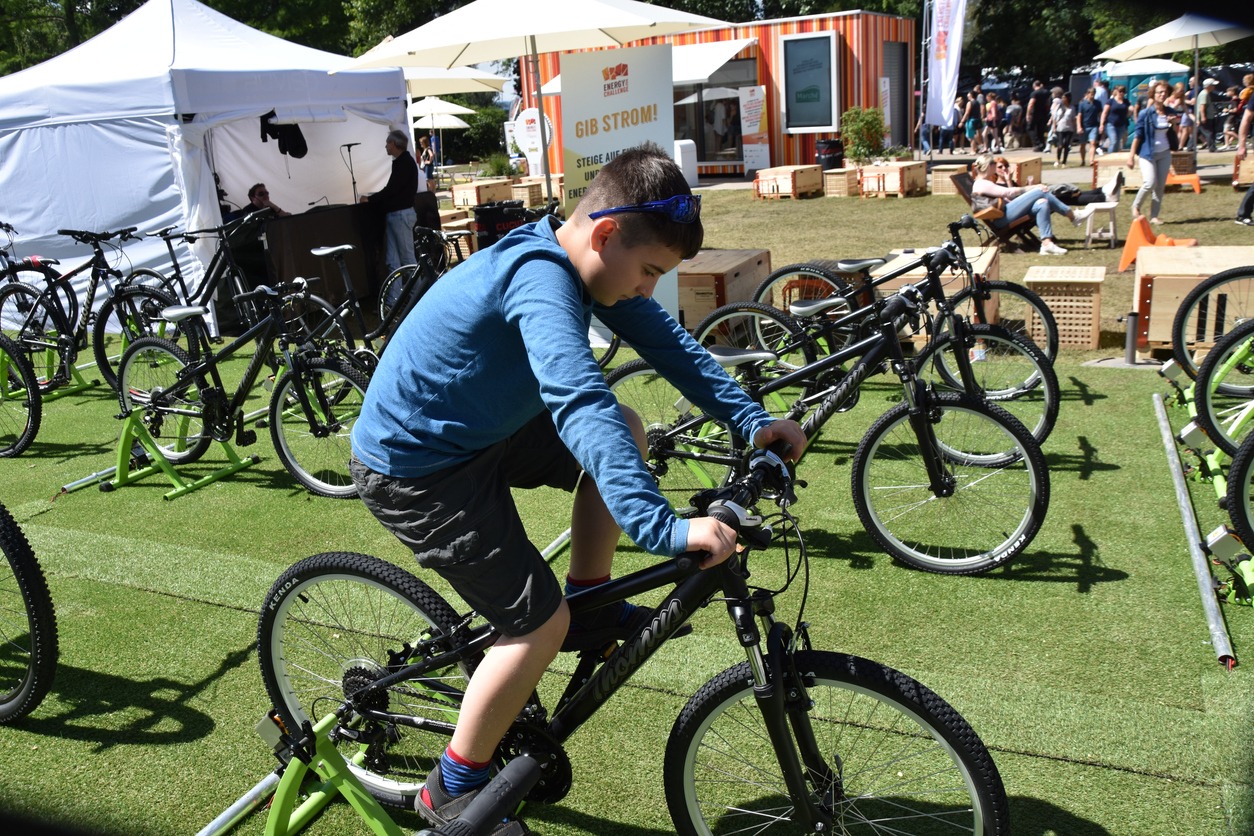Power banks are usually the go-to power source when traveling with a smartphone, tablet, laptop, portable music player, or any other gadget.
But what if your power bank runs out and you’re staying for days or even weeks in a place past the edge of civilization? Your regular power bank will not be enough. Low-tech power solutions, such as hand crank chargers and pedal power generators can help.
With a pedal power generator, your pedal power can produce energy to juice your devices or store power in a power pack.
However, a pedal power generator is not for backpackers, as it is heavy and bulky. But it is suitable for emergency use or when driving your car, RV, or another vehicle to a remote place. Another benefit of pedal power is that it gives you some workout while generating electricity. Just like you’re cycling as a hobby. Excellent, right?
How do pedal power generators work?
A pedal power generator is a human-powered energy generator whose electricity is generated through a modified exercise bicycle for energy storage and running home appliances. Human or mechanical energy is converted into an electrical current via a direct current (DC) generator that is connected by a fanbelt to an exercise bike flywheel.
The energy produced by the DC generator can be stored in different types of lead-acid batteries. Energy stored in battery form can function as a supplemental energy source for battery banks that may already be used for wind, solar, and hydro systems. In addition, energy stored in the lead-acid battery can be used as DC for use in DC appliances like those found in automotive mobile homes.
If you have appliances run by alternating current (AC), they require an inverter to transfer the 12 volts of DC into the standard 110 volts of AC to run such appliances.
Pedal power generators – pros and cons
1. They can help you stay fit and healthy – while producing electricity
Riding a stationary bike is considered a low-impact exercise. It is also suitable for all ages. You can spin a pair of pedals as fast as you can to help you lose weight, keep your heart healthy, and make yourself physically prepared for life’s challenges.
A pedal power generator puts your hobby to good use. Hooking your bike up to a generator provides the same benefits as your regular stationary bike – plus the added benefit of generating electricity to power your devices and appliances. That’s killing two birds with one stone.
2. They provide supplemental power during a cloudy day or in the winter
Solar power is the most popular power source for many off-gridders. But on cloudy days or in the winter season when the sun is low and the days are short, the power sources must be adequate to meet a household’s needs.
In such circumstances, anything that could add extra input would be welcome. We know that pedal power generators cannot produce as much power by any means, but they can help in situations where every bit counts.
3. They can effectively function as backup units
Power outages may not happen as often as before, but don’t rule them out. They can happen anytime, whether you live on the grid or off, and especially when disaster strikes. Power failures may be short-term or long-term, but they are always temporary. When facing such situations, having a dependable backup generator to power your devices makes sense.
While pedal power generators are no match to either the grid or solar panels in terms of power output, they can still provide essential power in a crisis.
For instance, if you use LEDs, steady and determined pedaling for a few minutes could help illuminate your home. You and your family can take turns pedaling to keep your room bathed in light for a few hours.
In such situations, you would have to ration energy, anyway. The power-producing limitations from a bicycle generator would not be as much of a hitch as would usually be the case.
4. They are environmentally friendly
Pedal power generators are also a good alternative source of power for running appliances and charging electronic devices. Pedal power, like hand crank power, is clean, safe, and renewable as it uses no fossil fuels.
Pedal power generators have some cons, too:
- They’re not exactly cheap – A new or refurbished bicycle could set you back a few hundred dollars if you want to get something durable and highly efficient.
- They don’t produce much power – Most of the time, a pedal power generator is likely to cough up no more than two cents’ worth of power for every hour put into use. So, pedal power generators are good for occasional use only when there’s no other available power source.
- They can wear out – Spinning a bicycle generator regularly will cause significant wear and tear, especially to the tires.
- When the generator is connected directly to appliances and electronic devices, it will be difficult to maintain speed in pedaling – Unless you are using a battery pack to store electricity, you have to stay up to speed to keep your appliances and devices running. However, pushing yourself to pedal harder and faster will also result in leg muscle pains. But if you fail to pedal continuously, the appliance and the inverter that converts the generator’s DC into AC may cut out every now and then. This means all your vigorous pedaling efforts will end up in vain.
Nowadays, people have more options for generating power to run household appliances and electronic devices. As you can see, pedal power generators provide many benefits, including benefits to your health and to the environment.
However, pedal power generators produce less electricity than grid power sources or solar panels. Weighing the pros and the cons, we can say that pedal power generators may be a good investment to some, especially if they plan to use them as a back-up power source.
